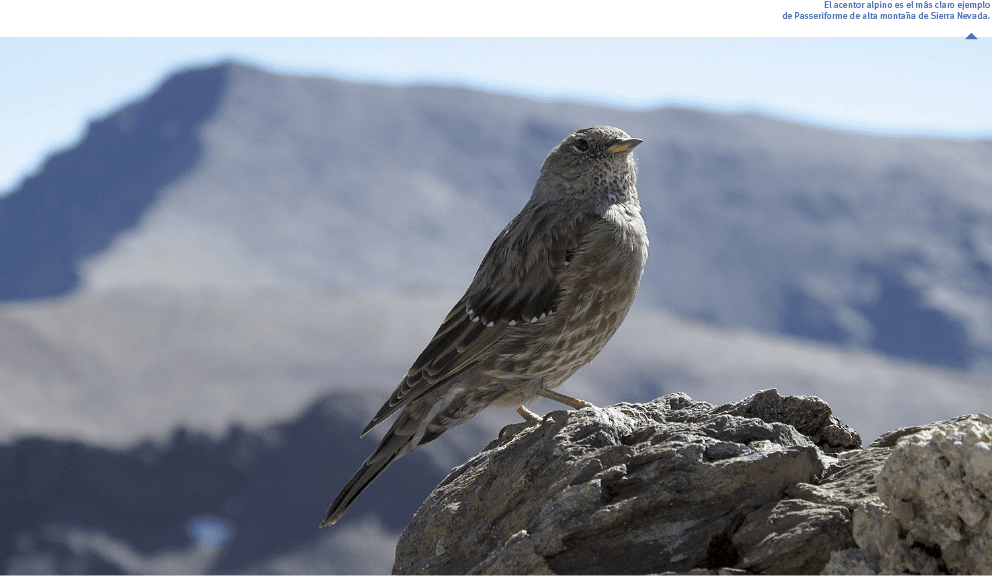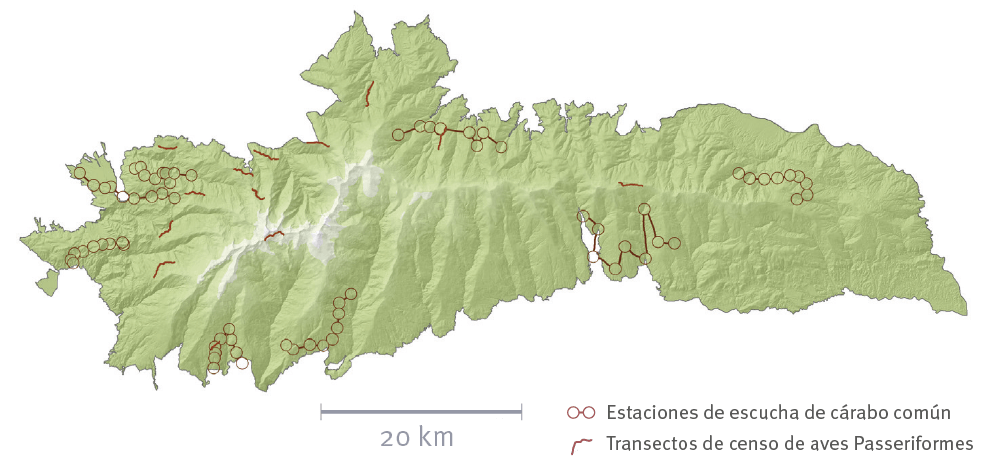Aims
The main aims of the monitoring of birds in Sierra Nevada are: to ascertain the trends of their populations over time, to determine the shifts in community composition, to record possible changes in phenology of arrival and departure of migratory species, and finally to assess the state of the ecosystems inhabited as a means of foreseeing possible problems.

Method and effort
Three different types of methodology were used:
- Census transects: used especially for passerines, although also for other orders. A total of 16 transects are completed, each roughly 2.5 km long and along which all sightings are recorded in a strip measuring 50 m on each side of the observer, which in turn is divided into 5 strips 10 m wide. The observer walks at a constant speed of 2 to 4 km/h for the first stretch of the morning.
- Listening stations:used exclusively for monitoring the tawny owl (Strix aluco). Eighty stations distributed every 1,500 m in 10 transects of 12 km long each are monitored.
- Direct search: seeking reproductive pairs of common rock thrush (Monticola saxatilis) and reproductive pairs, feeding areas, and roosts of the red-billed chough (Pyrrhocorax pyrrhocorax subsp. erythrorhamphus). In both cases, habitats propitious for both species are walked, sampling with optical devices (binoculars 10x40 and telescopes 20-60x100).

Periodicity
The transects are monitored monthly all year except for the stretches of the summit areas, which are completed only during the dry period, which is the time during which the biotopes are accessible for sampling. These transects have been monitored since 2007. The common rock thrush, the red-billed chough, and the tawny owl are monitored annually during the period appropriate for each species.
References
Moller, A.P., Fiedler, W. y Berthold, P. (eds.) 2010. Effects of climate change on birds. Oxford University Press. Oxford, UK, 320 pp.
Laiolo, P., Dondero, F., Ciliento, E. y Rolando, E. 2004. Consequences of pastoral abandonement for the structure and diversity of the alpine avifauna. J. Appl. Ecol., 41: 294-304.
Gordo, O. y Sanz, J.J. 2006. Climate change and bird phenology: a long term study in the Iberian Peninsula. Glob. Change Biol., 12: 1993-2004.
Zamora, R. 1987. Dinámica temporal y selección de hábitat de los paseriformes de la alta montaña de Sierra Nevada (SE España). Tesis doctoral. Universidad de Granada. Granada.